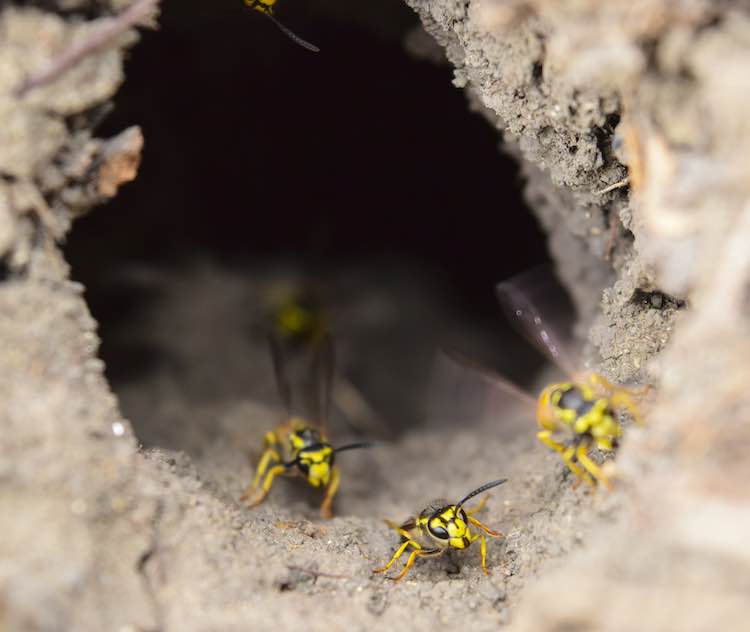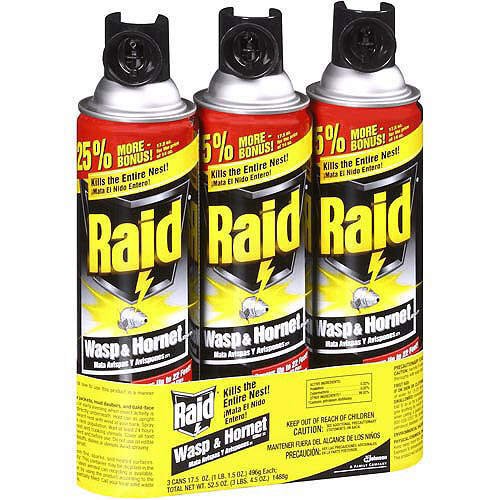How To Remove/Get Rid Of A Yellow Jacket Wasp Nest
Posted

Identifying Yellow Jacket Nests
Do you have bright yellow and black wasps coming after you grilled meats? Did you stumble upon a nest on the ground and got a rude greeting by dozens of wasps trying to sting you? Chances are you have yellow jacket wasps.
First - sorry to hear this. Yellow Jacket wasps are nasty prolific creatures. While they are somewhat beneficial insects (they kill aphids and other bugs in your yard) - they are often more detrimental than they are worth as they produce painful yellow jacket stings.
Yellow jackets build nests of 2,000-5,000 wasps - with some nests growing to 100,000 wasps by late summer (yes! 100,000!). They are very aggressive - quickly coming after human food sources like meats and sweets (say from a grill or patio) and are quick to sting if you try to swat them away. And if you squich them, yellow jacket foragers will release smells (or pheromones) when crunched that will tell the rest of the nest to attack.
Unlike honey bees and some other wasps, Yellow jacket queens usually create ground nests by taking over an existing hole (like an old gopher hole) in the ground often facing the north side of a hill. (A small number of Yellow Jacket species build aerial nests but that is often the exception.)You can usually identify the nest by a hole where yellow jackets take off an enter like an airport -often a few every second. You usually will feel/hear a nest before seeing it as sentry wasps will come to attack you in large numbers and will start biting you or using their stinger if you step near a nest. If you see wasp nests up in the awning of your home, chances are they are paper wasps and you can read about how to get rid of paper wasps here.
NOTE: One species of Yellow Jackets, German yellowjackets, can build nests in wall voids in your home. If this is the case, seek help from a professional pest control agent as you will want the nest completely removed to avoid other pests entering your home and trying to eat the nest afterwards.
How to Find a Yellow Jacket Nest
To find a yellow jacket nest, place a plate of meat on the ground to attract the yellow jackets and try to watch where they go when they grab the food. A small piece of burger or hotdog or chicken works best. The yellow jackets will come for the food and after grabbing a piece they will leave, rise a spiral motion and then move directly back to their nest (hence the phrase “bee-line”). With some practice you can start seeing which direction they are heading and narrow down the location of the nest site. Move your plate to different angles to see if you can triangulate where the yellow jackets are coming from. Once you find the location, mark nearby the location with a stake or spray paint so you fan find it later at night. If you cannot find the nest location you will not be able to spray the nest. And make sure you are not hanging any yellowjacket traps up as you want the yellow jackets to go back to their hidden underground nests.
DIY Removing Yellow Jacket Nests:
If you want to remove a yellow jacket nest, buy a wasp/hornet nest spray and recognize there is a good likelihood you will end up with at least one yellow jacket sting.

Pick a cool night, dress in protective clothing like a long sleeve jacket, think pants, gloves, a full face mask and goggles. Completely cover your extremities by attaching rubber bands your gloves and socks so there are no spaces for yellow jackets to enter - and bring a flashlight so you can find the nest. Wasps are active during the day and often will sleep at night when the air gets cooler so you have a better chance of destroying more wasps and killing the nest without getting attacked.
Before spraying, make sure you have a plan - including where you will spray and where you can make a quick get-away to an internal space. Then - right before dawn - Spray the entrance hole to the yellow jacket’s nest from 10+ feet away with the hornet/wasp spray until the entire nest opening is coated and quickly run to an interior location with the doors and all windows shut. Remain inside - and keep all pets and children inside for at least 2 hours afterwards.
You can check the nest location later the next day to see if activity has decreased and if not, you may need to re-apply.
Getting rid of yellow jacket nests is a dangerous activity and should be treated with the utmost care. If you are allergic or do not wish to get stung, you are much better off getting a professional pest control agent.
Here’s hoping you get them!